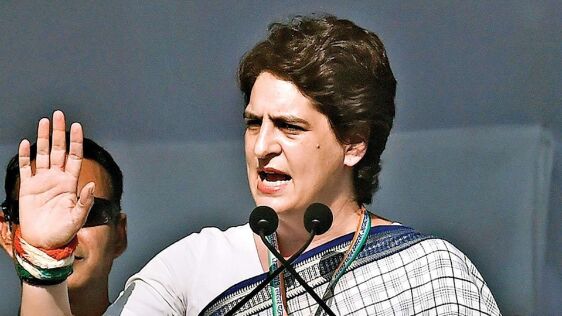Unidentified leaders

Priyanka Gandhi's assurance of giving 40 per cent tickets to women in UP Assembly elections provides a glimmer of hope for enhancing women's participation in politics. This is a hope that has been shown to Indians many times over the past two decades but could not be materialized for uncertain reasons. India has failed to capitalize upon a huge leadership potential offered by nearly half of its population, adding drastically to its leadership crisis. This remains a concerning issue for a nation that aspires to place itself on higher pedestals globally on all fronts. It is also very unfortunate that women's representation in politics in India is seen through the lens of women empowerment. Though it is not practically incorrect, there is a need to start taking the discourse towards the aim of nation's empowerment. From history to the present, instances abound where, through their effective leadership, women have shaped the destiny of the nation — from the freedom struggle resulting in the birth of our nation to mass movements like Chipko to the exceptionally functioning SHGs like Kudumbshree. Of course, there is no end to the list. At the grassroots, women have been leading remarkably well in the third tier of the government. Despite all its fallacies and inconsistencies in the form of proxy politics and other loopholes, the 73rd constitutional amendment has made a big difference in the governance scenario of Indian villages and small towns. However, the same has failed to trickle up to national politics. It appears no less than a mockery that the Women's Reservation Bill — introduced in the Parliament in 1996 with the provision to reserve 33 per cent of seats in the Lok Sabha and state legislative assemblies for women — is still lingering in the pipeline. This comes even though all political parties appear to back the legislation. The Vajpayee government initiated the process of getting the bill passed in 1998 but could not take it to any meaningful conclusion. A decade later, the UPA government also re-introduced the bill in the Parliament, but with no outcome. The current BJP-led NDA government — despite including the issue in its 2014 manifesto — has not been able to get the bill passed to date. Now, 25 years is too long a time to decide on the inclusion of women into national politics. The factors that impede women's participation in politics have been assessed multiple times over the years but the solution has not been worked out to date. Factoring into the ground realities, it can safely be said that elections are a costly affair in India. Money and muscle power are still the dominating factors that determine victory and defeat in Indian politics. The 'winnability factor' is the often-projected reason behind the exclusion of women in Indian politics. Ideally, there couldn't be any logic that differentiates the winnability of two candidates on the basis of gender. It is the larger socio-political rot that has marred the notion of winnability. Political parties, if they are sincere towards the inclusion of women in politics, must hit at the roots of this socio-political rot. In India, 42 per cent of female MPs come from political families compared to 15 per cent of male candidates. This simply implies that women hailing from political families are given precedence over those who come from families without any political background. Political parties consider such candidates less risky as they provide confidence to the voters. This also reflects the necessity of re-shaping public perception around the issue. The fact that around half of the elected candidates have come from politically affluent families, makes the picture of real representation of women as a section of society more dismal. Under-representation of women in national politics does not only highlight the wastage of leadership qualities and organizational skills, but also puts a blot on the 'democratic' prestige of the nation. It is not a mere coincidence that in the Democracy Index of 2020, four out of the top five democratic countries — Norway, Iceland, Sweden, and New Zealand — had an average of 46 per cent of women's representation in Parliament. India — with its meagre percentage of women representation lingering below 15 per cent — is listed among the worst-performing countries in this direction. It certainly is the time to tap the leadership potential by including more women in the Parliament, judiciary and executive, and steer the nation towards the growth path. How long Priyanka's promise will go to make a dent in the current under-representation scenario is a question better left on time. But it is certainly a message for political parties to introspect on the issue.



